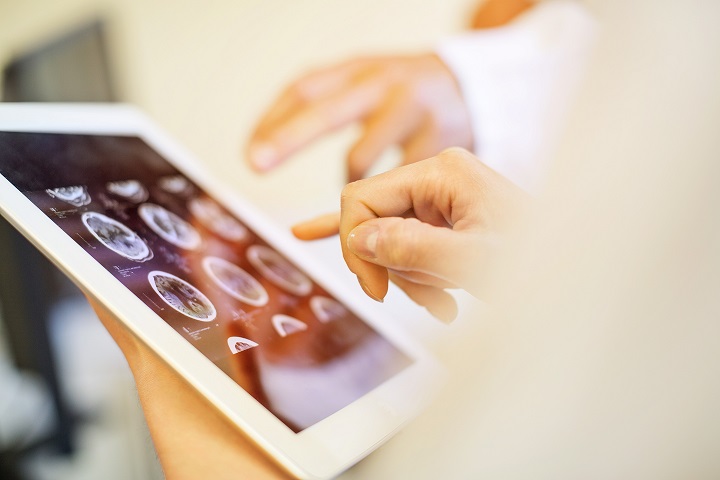UK lays out roadmap for regulation of software and AI as medical devices
Published on 28th October 2022
What 'deliverables' does the MHRA want from its roadmap and what can be expected from its work packages?

The Medicines and Healthcare products Regulatory Agency (MHRA) has published its "roadmap" for regulating software as a medical device (SaMD) and artificial intelligence as a medical device (AIaMD).
The roadmap provides a substantive update to the MHRA's original publication last autumn in which it had set out its regulatory focus areas for SaMDs and AIaMDs and which formed part of the wider post-Brexit proposed reforms for medical device regulation in the UK. It follows the MHRA's consultation the opened in September 2021 and publication of the results in June this year, along with the government response and plan for the future regulation of medical devices in the UK.
The updated roadmap provides, for the first time, a granular indication of the government's focus areas, breaking these down into 11 easy-to-navigate work packages (WPs) and the steps the MHRA will take, along with other stakeholders, to meet its objectives.
Software as a medical device (WP1–3)
There is recognition that the current regulatory framework does not adequately define SaMD making it unclear what software falls within its scope. The MHRA's intention is to sharpen the definition of SaMD and clarify through guidance and examples what devices will be captured by this including SaMD versus wellbeing software.
The MHRA acknowledges that it is not always clear who – if anyone – is the "manufacturer" is of SaMD, especially where software is developed and subsequently changed by another party or is open source. The MHRA has committed to publishing a policy position on the definition of a manufacturer and a clearer set of "pre-market requirements" to ensure a smoother path to market for parties with roles being clearly defined.
There is also a clear intention to improve the safety of existing SaMD. The government wants stronger vigilance to detect and mitigate the risk of patient safety incidents. There will therefore be a need for robust change management processes to enable rapid updating of SaMD when required in response to issues or challenges.
There is recognition that innovative products that meet a critical unmet need can struggle to gather the necessary evidence in the pre-market phase. Consequently, the MHRA is exploring whether to introduce an "airlock process" allowing software to generate real-world evidence for a limited period of time while being continually monitored. This will be subject to consultation should it be taken forward.
AI as a medical device (WP9–11)
The overarching theme set out in these work packages is the safety of patients and the public. There is an emphasis on making sure that data is representative of the whole population and on reducing bias.
The government wants to use the 10 guiding principles of good machine learning practice and will provide guidance to manufactures to show how this aligns with both UK and international legislation. There will also be guidance on best practice for continuously developing AI and making sure that data is representative to avoid perpetuating inequalities.
As part of this roadmap, Project Glass Box aims to provide information and transparency to users. The aim of this is to improve confidence among the public and healthcare professionals about the trustworthiness of AIaMD.
The final and perhaps the most intriguingly named WP is Project Ship of Theseus. The focus here is to improve the adaptability of AI and strengthen change management processes and to encourage businesses to continually develop their AI, even if that means replacing all of the original parts – just like the Ship of Theseus.
Where are WP6, 7 and 8?
The original roadmap published in 2021 identified 11 work packages in total but only eight of these are now included in the updated roadmap. According to the MHRA, the three additional work packages have been "nested or absorbed" into the others.
WP6 and 7 both focussed on businesses' access to market and reducing the "SaMD airlock". Improving the route to market is covered in WP2 and 3. WP08 is focused on "mobile health and apps" and is described as "nested into all the other work packages".
What to watch out for next
The government intends to publish the draft deliverables in phases, with the first drafts published by the end of 2022. The fact that these deliverables have been picked out indicates the initial areas of focus for the government:
For SaMD, it plans first drafts this year of regulatory guidance for authors or manufactures to help them define the "intended purpose" of a device (WP1-02) and a review of the process for "adverse incident signal detection" with the aim of identifying safety signals earlier and improving patient safety (WP4-01).
For AIaMD, it intends to produce: a document for innovators which summarises how "good machine learning practices" links to responsibilities in the Medical Device Regulations (2002), so that innovators better understand their responsibilities (WP9-02); guidance to help identify, measure, manage and mitigate bias to improve the representativeness of data (WP9-05); and a paper to breakdown the current change management issues and how regulation can address these challenges (WP11-01)
Osborne Clarke comment
The detail of the roadmap emphasises safety, inclusion and change management. Businesses will need to show that they have robust safety processes in place to protect patients and the public. They will also need to demonstrate how they plan to reduce and mitigate data bias.
The roadmap also recognises the current difficulties placed on innovators or "manufacturers" supplying SaMD and AIaMD in the UK. This is due to recognition that the current regulatory framework is not fit for purpose. In addition, although not explicitly stated, market access could be made more difficult due to divergence between the UK and EU's regulatory frameworks post-Brexit.
There is a notable commitment in the roadmap that future standards and guidance will follow international standards, which will be a welcome announcement for stakeholders as it is likely to provide much more clarity and make it easier to innovate and get products to market more quickly. Our expectation is that the UK's approach will prove not to be dissimilar to the EU's approach, in an attempt to ensure more streamlined market access.
Businesses placing SaMD and AIaMD on the market should keep the MHRA's roadmap under review as further guidance is expected in the coming months.
The roadmap's work packages: a summary table
| Work stream | Work package | Heading | Deliverables |
| SaMD | 1 | Qualification | Clarify what qualifies as a "SaMD". Focus area: by the end of 2022, publish regulatory guidance to help them the "intended purpose" of a device. |
| 2 | Classification | Classify software proportionately to the risk. | |
| 3 | Premarket | Set out clearly the premarket requirements for SaMD. | |
| 4 | Post market | Improve surveillance of market to detect and mitigate risks to patients. Focus area: by the end of 2022, complete a review of the process for "adverse incident signal detection" with the aim of identifying risks earlier and improving patient safety. | |
| 5 | Cyber security | Improve cyber security of medical devices. | |
| Now incorporated into the SaMD and AIaMD streams | 6 | Innovative Access | This work package was focused on identifying if there is a need for a "novel pathway to market". This is now covered in WPs 2 and 3. |
| 7 | SaMD Airlock | The purpose of this work package was to determine if the need for an "airlock classification" to enable timely access to market for novel devices. Specially addressed in WP 2. | |
| 8 | Mobile Health and Apps | This work package aimed to ensure that the mobile health market was safe and effective. Now covered in a range of other work packages. | |
| AIaMD | 9 | AI Rigour | Ensure that products achieve the appropriate level of safety for their purpose. Focus area: by the end of 2022, produce a document which summarises how "good machine learning practices" links to responsibilities in the Medical Device Regulations (2002). Focus area: by the end of 2022, produce guidance to help identify, measure, manage and mitigate bias to improve the representativeness of data. |
| 10 | Project Glass Box | Improve transparency of AIaMD for healthcare professionals and the public. | |
| 11 | Project Ship of Theseus | Promote adaptability of AIaMD and improve change management processes. Focus area: Produce a paper to breakdown the current change management issues and how regulation can address these challenges. |
This article was produced with the assistance of Hannah Edwards, Trainee Solicitor.




